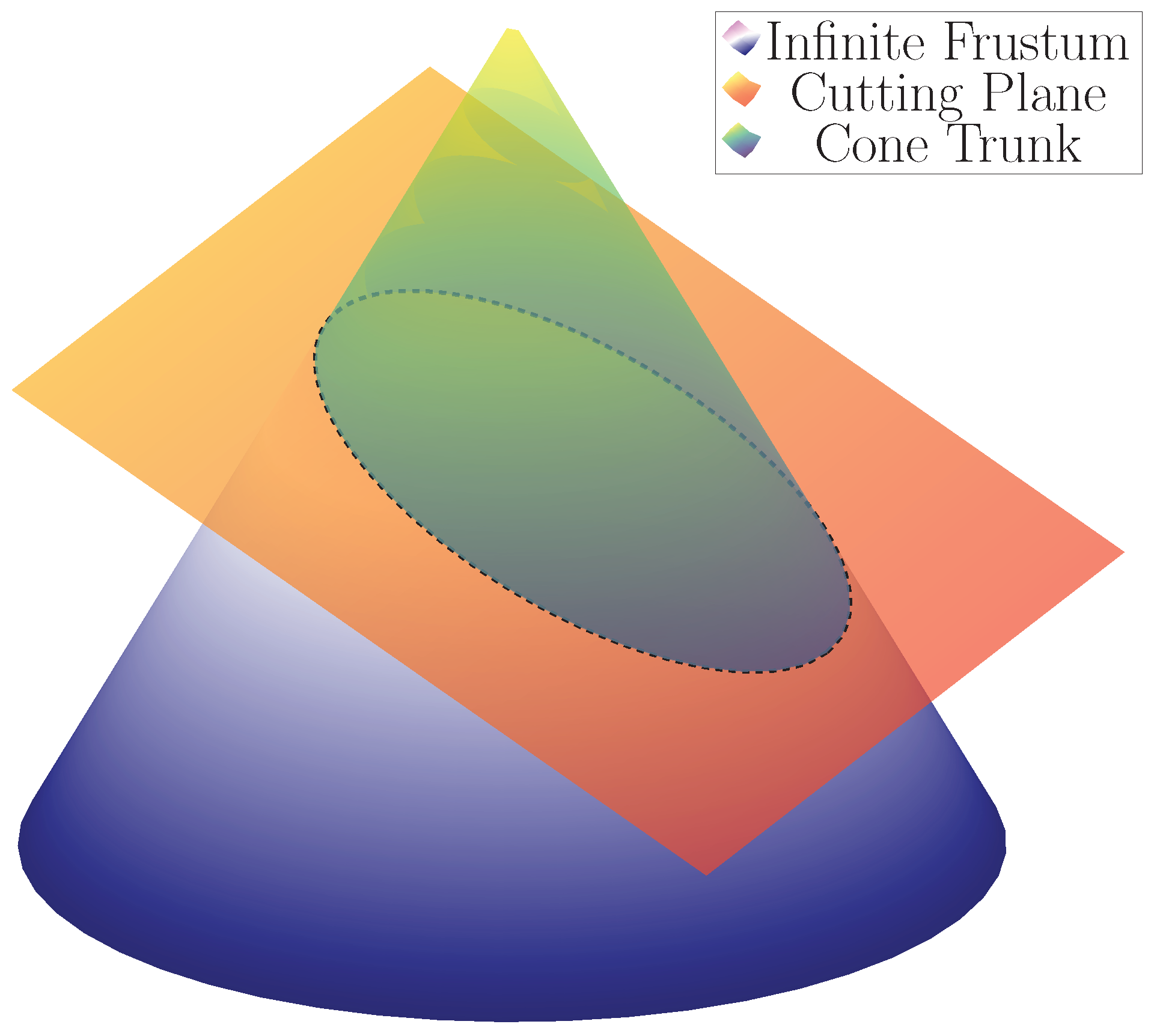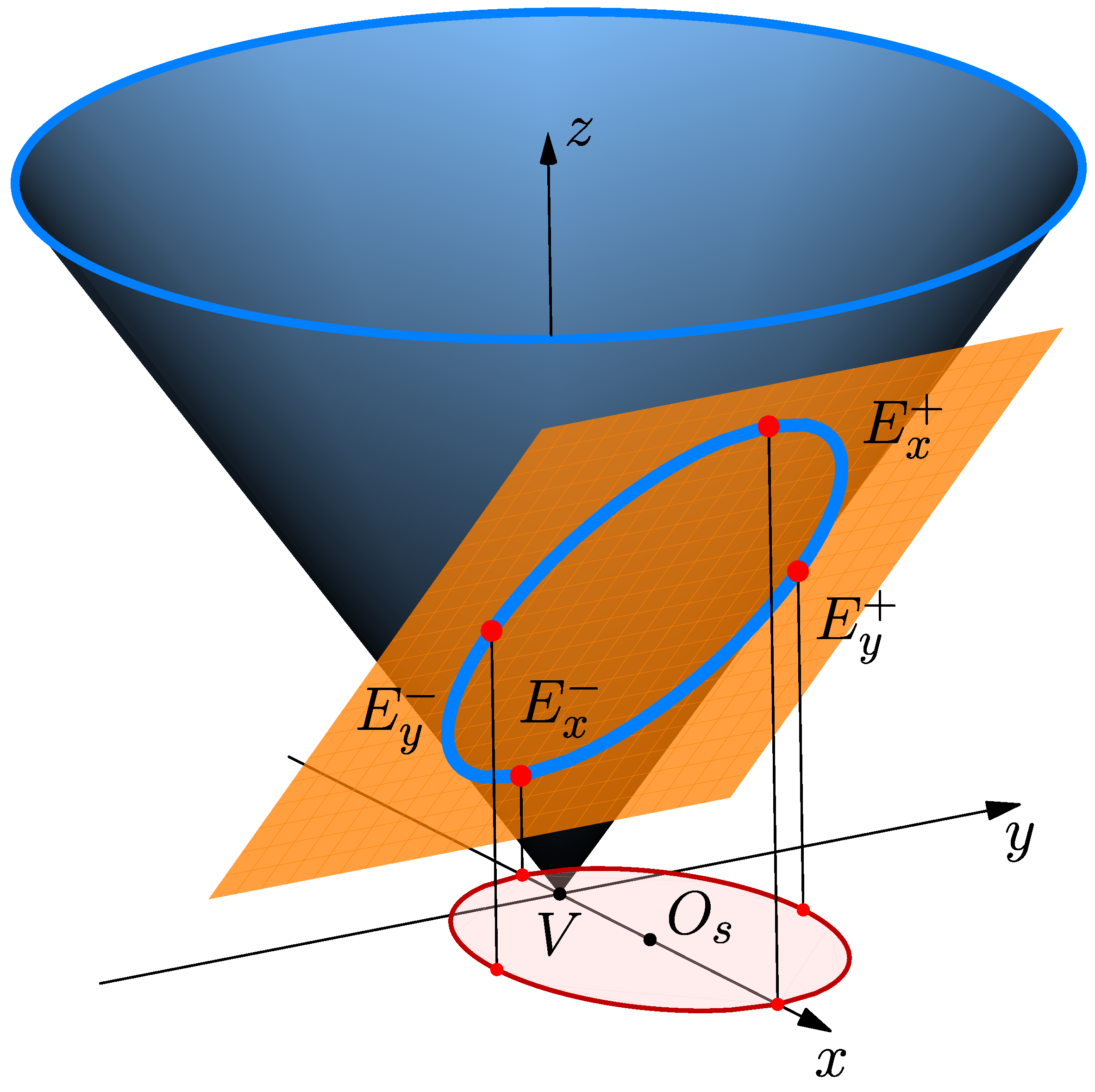Volume-Preserving Shear Transformation of an Elliptical Slant Cone to a Right Cone
Abstract
1. Introduction and Problem Formulation
2. Background and State of the Art
3. Equivalence of the Volume of the Slanted and Right Cone
4. Conclusions
Author Contributions
Funding
Informed Consent Statement
Data Availability Statement
Conflicts of Interest
References
- Green, S.L. 794. [L2. 20.] The Volume Cut from a Right Circular Cone of Semi-Vertical Angle α by a Plane Making an Angle β(>α) with Its Axis. Math. Gaz. 1925, 12, 444–445. [Google Scholar] [CrossRef]
- Foley, J.; Van, F.; Van Dam, A.; Feiner, S.; Hughes, J.; Angel, E.; Hughes, J. Computer Graphics: Principles and Practice; Addison-Wesley Systems Programming Series; Addison-Wesley: Boston, MA, USA, 1996. [Google Scholar]
- Miklavcic, S.J. An Illustrative Guide to Multivariable and Vector Calculus; Springer Nature: Cham, Switzerland, 2020. [Google Scholar] [CrossRef]




Disclaimer/Publisher’s Note: The statements, opinions and data contained in all publications are solely those of the individual author(s) and contributor(s) and not of MDPI and/or the editor(s). MDPI and/or the editor(s) disclaim responsibility for any injury to people or property resulting from any ideas, methods, instructions or products referred to in the content. |
© 2024 by the authors. Licensee MDPI, Basel, Switzerland. This article is an open access article distributed under the terms and conditions of the Creative Commons Attribution (CC BY) license (https://creativecommons.org/licenses/by/4.0/).
Share and Cite
Frego, M.; Consonni, C. Volume-Preserving Shear Transformation of an Elliptical Slant Cone to a Right Cone. Axioms 2024, 13, 245. https://doi.org/10.3390/axioms13040245
Frego M, Consonni C. Volume-Preserving Shear Transformation of an Elliptical Slant Cone to a Right Cone. Axioms. 2024; 13(4):245. https://doi.org/10.3390/axioms13040245
Chicago/Turabian StyleFrego, Marco, and Cristian Consonni. 2024. "Volume-Preserving Shear Transformation of an Elliptical Slant Cone to a Right Cone" Axioms 13, no. 4: 245. https://doi.org/10.3390/axioms13040245
APA StyleFrego, M., & Consonni, C. (2024). Volume-Preserving Shear Transformation of an Elliptical Slant Cone to a Right Cone. Axioms, 13(4), 245. https://doi.org/10.3390/axioms13040245








